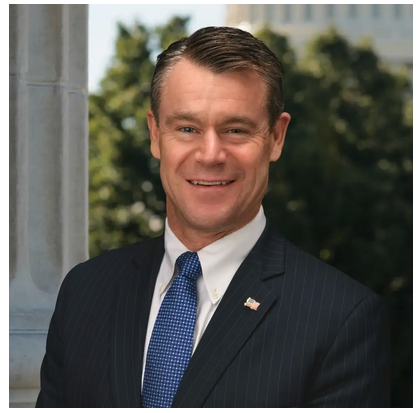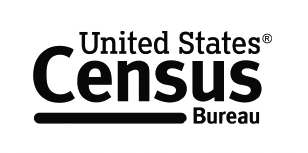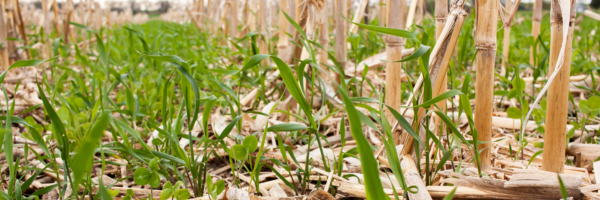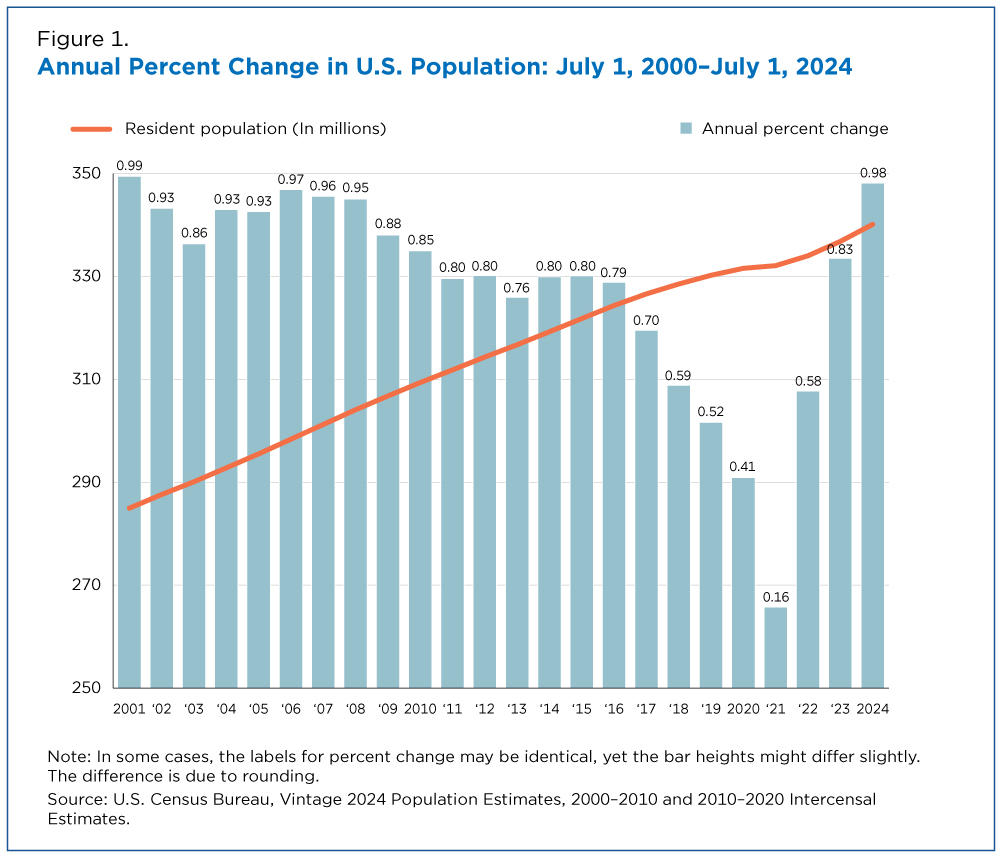
U.S. Senator Todd Young (R-Ind.) joined U.S. Senator Katie Britt (R-Ala.) and all Senate Republicans in reintroducing the Laken Riley Act. The bill, which passed the House of Representatives on Tuesday, is expected to be considered later this week in the Senate.
The legislation would require U.S. Immigration and Customs Enforcement (ICE) to arrest illegal aliens who commit theft, burglary, larceny, or shoplifting offenses and would mandate that these aliens are detained until they are removed from the United States so they cannot reoffend or commit further crimes. The bill would ensure states have standing to bring civil actions against federal officials who refuse to enforce immigration law or who violate the law.
“Laken Riley should still be with us today. The man who killed Laken entered the United States illegally and was arrested and released multiple times before killing Laken,” said Senator Young. “Securing our border is a national security priority, and this bill is one of many steps we should take to reverse the Biden Administration’s open border policies.”
The entire Senate Republican Conference cosponsored the Laken Riley Act for the 119th Congress, including Senators Ted Budd (R-N.C.), John Thune (R-S.D.), Jim Banks (R-Ind.), J.D. Vance (R-Ohio), Jim Risch (R-Idaho), Eric Schmitt (R-Mo.), James Lankford (R-Okla.), Kevin Cramer (R-N.Dak.), Tommy Tuberville (R-Ala.), John Hoeven (R-N.Dak.), Mike Lee (R-Utah), Ron Johnson (R-Wis.), John Barrasso (R-Wyo.), Roger Wicker (R-Miss.), Cynthia Lummis (R-Wyo.), Thom Tillis (R-N.C.), Tom Cotton (R-Ark.), Mike Crapo (R-Idaho), Chuck Grassley (R-Iowa), Mitch McConnell (R-Ky.), Bernie Moreno (R-Ohio), Jerry Moran (R-Kan.), Lindsey Graham (R-S.C.), John Boozman (R-Mont.), John Kennedy (R-La.), Roger Marshall (R-Kan.), Susan Collins (R-Maine), Steve Daines (R-Mont.), John Cornyn (R-Texas), Rick Scott (R-Fla.), Tim Sheehy (R-Mont.), Joni Ernst (R-Iowa), Markwayne Mullin (R-Okla.), Bill Hagerty (R-Tenn.), Pete Ricketts (R-Neb.), Shelley Moore Capito (R-W. Va.), Lisa Murkowski (R-Alaska), Deb Fischer (R-Neb.), Josh Hawley (R-Mo.), Tim Scott (R-S.C.), Marsha Blackburn (R-Tenn.), Dan Sullivan (R-Alaska), John Curtis (R-Utah), Cindy Hyde-Smith (R-Miss.), Ted Cruz (R-Texas), Mike Rounds (R-N.D.), Bill Cassidy (R-La.), Marco Rubio (R-Fla.), Dave McCormick (R-Pa.), and Rand Paul (R-Ky.). Senator John Fetterman (D-Pa.) also cosponsored the legislation.

New 2024 Population Estimates Show Nation’s Population Grew by About 1% to 340.1 Million Since 2023
Following historically low growth at the height of the COVID-19 pandemic, the U.S. population grew substantially by almost 1% since 2023, outpacing average annual growth since 2000 and signaling a significant turnaround from the meager population gains at the start of this decade.
By 2024, after three consecutive years of population growth exceeding 0.5%, the United States seems to have recovered from pandemic-era lows.
The U.S. Census Bureau today released July 1, 2024, population estimates for the nation and states. The U.S. population reached 340.1 million, up 0.98% from 336.8 million on July 1, 2023 — the highest year-over-year increase since a jump of 0.99% between 2000 and 2001.
Population Trends Since 2000
Since 2000, the nation has grown by almost 58 million, with an average annual growth rate of approximately 0.8%. The most robust growth occurred between 2001 and 2008, fueled by changing migration trends and higher birth rates.
However, population trends have fluctuated over the past two decades, reflecting how major world and national events can influence population growth.
For instance, national security concerns immediately following 9/11 resulted in fewer migrants, slightly tempering population growth between 2001 and 2003.
Similarly, the financial crisis which started in 2008, dubbed “The Great Recession,” impacted both fertility and immigration in the United States. Between 2008 and 2009, births dipped by nearly 3% and net international migration fell almost 12%.
By the early 2010s, the pace of U.S. growth had begun to slow down. After a slight uptick in 2014-2015, population growth slowed again and 2016 ushered a new period of sluggish growth brought on by declining net international migration and falling birth rates (Figure 1).
That marked the start of a prolonged period of below-average growth.
COVID-19 Pandemic and Recovery
At the start of the 2020s, the COVID-19 pandemic slowed the nation’s population growth further.
A national emergency declaration resulted in travel restrictions, temporarily limiting entry. Also during this time, the number of deaths surged and births declined. This combination resulted in the United States experiencing the slowest period of growth on record in 2021 — as the population increased by just 0.16% — underscoring the pandemic’s effect on the population.
When the nation recovered from the pandemic, its population growth did as well, more than doubling from 2021 to 2022.
As travel restrictions started to ease and migration increased, the pace of growth quickened. A slight rise in births and decrease in the number of deaths supported the turnaround.
By 2024, after three consecutive years of population growth exceeding 0.5%, the United States seems to have recovered from pandemic-era lows.
What Influences Population Change?
Natural increase (births minus deaths) and net international migration (immigration minus emigration) are the major influences on population growth, but their relative contributions to growth have changed over time (Figure 2).
Natural increase has historically been the cornerstone of U.S. population growth. Yet, in recent years, its contribution has dwindled due to fewer births and more deaths. The aging of the population is fueled by the large number of Baby Boomers born between 1946 and 1964 entering high mortality ages.
There was a brief uptick in births from 2021 to 2022, but rates returned to their downward trend in 2023.
In contrast, net international migration’s influence on population trends has increased over the last few years. Since 2021, it accounted for the majority of the nation’s growth — departure from the last two decades, when natural increase was the main factor.
More U.S. and state population and demographic components of change are available in the most recent population estimates release.

ODON – One team, one fight, one community. A unifying message of collaboration and shared commitment between the Naval Support Activity Crane installation and the counties surrounding the base was a common theme at the Crane Regional Defense Group’s State of the Installation Dec. 11 at WestGate Academy.
Cmdr. Luis Martinez delivered the State of the Installation address, which was the final engagement of CRDG’s Key Leader Series of 2024.
Martinez shared Team Crane’s strategic goals and gave an overview of proposed construction projects that will impact local businesses and communities.
Martinez was named NSA commander in 2023. NSA is home to the Naval Surface Warfare Center and Crane Army Ammunition Activity. As the third largest Navy installation in the world, the base is spread out over 62,000 acres. It contains 3,000 buildings, 1,800 storage magazines, 500 miles of road and 95 miles of active rail.
The base has grown to a workforce of 6,500 people made up of 98% civilians and defense contractors. NSA Crane is unique among military bases in that just 2% of its workforce serves in a military unit, Martinez said.
 https://southernindianabusinessreport.com/wp-content/uploads/2023/08/cmdr-martinez-nsa-crane-228x300.jpg 228w, https://southernindianabusinessreport.com/wp-content/uploads/2023/08/cmdr-martinez-nsa-crane-150x198.jpg 150w, https://southernindianabusinessreport.com/wp-content/uploads/2023/08/cmdr-martinez-nsa-crane-300x395.jpg 300w" alt="" width="312" height="411" class="wp-image-4847 td-animation-stack-type0-2" decoding="async" />
https://southernindianabusinessreport.com/wp-content/uploads/2023/08/cmdr-martinez-nsa-crane-228x300.jpg 228w, https://southernindianabusinessreport.com/wp-content/uploads/2023/08/cmdr-martinez-nsa-crane-150x198.jpg 150w, https://southernindianabusinessreport.com/wp-content/uploads/2023/08/cmdr-martinez-nsa-crane-300x395.jpg 300w" alt="" width="312" height="411" class="wp-image-4847 td-animation-stack-type0-2" decoding="async" />Infrastructure is one of the responsibilities of the base commander. Martinez said Crane’s infrastructure has been largely unchanged since the base was established in 1941. Future upgrades are necessary to support ongoing and planned modernization of CAAA and NSWC operations. Martinez outlined those projects:
15-year modernization plan for CAAA and NSWC
- $160 million for the new CAAA pyrotechnics complex that will replace the current facility that was built in the 1940s. The new complex is needed to build the munitions of 2050, which includes countermeasures. The new complex, expected to exceed 50,000 feet of floor space, will have room to expand and offer increased levels of safety buffers over the current location.
- $35 million rail renovation that is currently in progress.
- $30 million hypersonics integration facility at WestGate will create 60-150 jobs with an average annual salary of $80,000
- $120 million in total investment for the microelectronics facility at WestGate. The facility will be contractor owned and operated.
- Projects that will soon be completed include a Strategic Systems Engineering Facility, Missile Technology Evaluation Facility and Flash X-ray.
Defense spending
Looking to the future of NSA Crane, Martinez said Indiana currently ranks No. 28 ($6.4 billion in fiscal year 2023) for national defense spending. Texas, ($71.6B) Virginia ($68.5B) and California ($60.8B) are the top three states, according to the US Department of Defense Office of Local Defense Community Cooperation.
Martinez wants to see Indiana break into the upper tier of the rankings.
Moving up in the rankings will take effort on all fronts from across the state both inside and outside the military bases, and a mindset shift from “This is good enough” to “We can be more.”
A skilled workforce, improved infrastructure, modernization and community resiliency to expand housing are necessary for bringing more people and investment to the region around Crane.
It’s a challenge that he said is worth pursuing.
“We have to make NSA Crane so important, it can’t be replaced, that’s what we need to do here,” he said.
About 100 attended Martinez’ address. To learn more about CRDG, register for 2025 events, or become a member, visit craneregionaldefensegroup.org.

|

The Indiana State Department of Agriculture, The Nature Conservancy and the United States Department of Agriculture’s Risk Management Agency have joined forces to implement the Cover Crop Premium Discount Program for the fifth year in a row.
Beginning Jan. 1, 2025, this program will provide farmers with a unique opportunity to receive financial incentives for implementing cover crops on their operation. Farmers who plant cover crops on owned or rented acres will receive a $5 per acre crop insurance premium discount. Farmers who planted cover crops in the fall of 2024 are eligible to apply. This program is eligible for 50 out of the 92 counties in Indiana.
Crop insurance is an integral part of the farm safety net that provides financial protection for farmers after bad weather impacts their crops. Cover crops can provide many benefits which include helping to prevent erosion, improving water quality and making soils more resilient to weather and climate impacts.
The Indiana State Department of Agriculture (ISDA), The Nature Conservancy and partners throughout the state have worked with the USDA Risk Management Agency (RMA) to establish an initiative to increase cover crop usage in Indiana. Our focus for this program is to target first time cover crop users in an effort to expand awareness and the adoption of cover crops as a tool to improve farm resiliency.
This project will provide eligible participants with a $5/acre premium discount on the following year's crop insurance invoice for every acre of cover crop enrolled and verified in the program. Funding will be provided through RMA as an additional insurance premium discount through normal crop insurance processes. Only acres in cover crops (absent other state or federally incentivized cover crops) will be eligible for the premium discount. Confirmed applications will be forwarded to the USDA-RMA for processing premium discounts on crop insurance premium invoices for the 2024 cash crop. Applicants must certify that by signing up for this program, they give ISDA permission to share the information provided to the USDA-RMA for administering the benefit to the beneficiary as documented on the application. Applicants also convey permission to ISDA or SWCD representative(s) access to the property enrolled, if necessary, to verify cover crop establishment ISDA will verify applications and respective acreage. Being a first-time cover crop user is not a requirement but will be given priority for funding. ISDA may contact applicants for additional clarifying information.
Applicants must maintain documentation on cover crops that have been seeded (e.g. Seed Tags, Application Invoices) and utilize the Midwest Cover Crop Council - Cover Crop Tool or the NRCS Field Office Technical Guide recommendations. This includes seeding dates, appropriate seeding rates and seed mixes to ensure objectives of the cover crop are being met. A cover crop is considered: "a non-grain harvestable, non-insurable conservation/agronomic practice seeded in the fall to protect and improve soil and water quality." To ensure the practice achieves the desired results, no full width tillage/termination of the cover crop in the fall is allowed. Management/termination of the cover crops must be done in the spring in accordance with the most recent version of the USDA-NRCS Cover Crop Termination Guidelines. This guidance not only informs proper management of cover crops but must also be followed to maintain eligibility for federal crop insurance.
The Cover Crop Premium Discount Program is available in the following counties: Bartholomew, Boone, Brown, Clark, Crawford, Daviess, Dearborn, Decatur, Delaware, Dubois, Fayette, Floyd, Franklin, Gibson, Greene, Hamilton, Hancock, Harrison, Hendricks, Henry, Jackson, Jefferson, Jennings, Johnson, Knox, Lawrence, Madison, Marion, Martin, Monroe, Morgan, Ohio, Orange, Owen, Perry, Pike, Posey, Randolph, Ripley, Rush, Scott, Shelby, Spencer, Switzerland, Tipton, Union, Vanderburgh, Warrick, Washington and Wayne.
SalemLeader.com
Leader Publishing Company of Salem, Inc.
P.O. Box 506
117-119 East Walnut Street
Salem, Indiana. 47167
Phone: 812-883-3281 | Fax: 812-883-4446
Business Hours:
Mondays through Fridays, 9:00am - 5:00pm
News:
news@salemleader.com
Office:
office@salemleader.com
Publisher:
publisher@salemleader.com
Business
- More Business News
- Go To Guide
- Business Directory
- Auctions
Education
- More Education News
Opinion
- Editorials
- Letters to the Editor
- Columns
- Unsung Heroes
- Days Gone By
- In the Garden
- Guest Columns
- Reader's Poll
- Salem Leader Forum
- Questions and Answers
Church
- Bible Aerobics
- Church News
- Church Directory







































